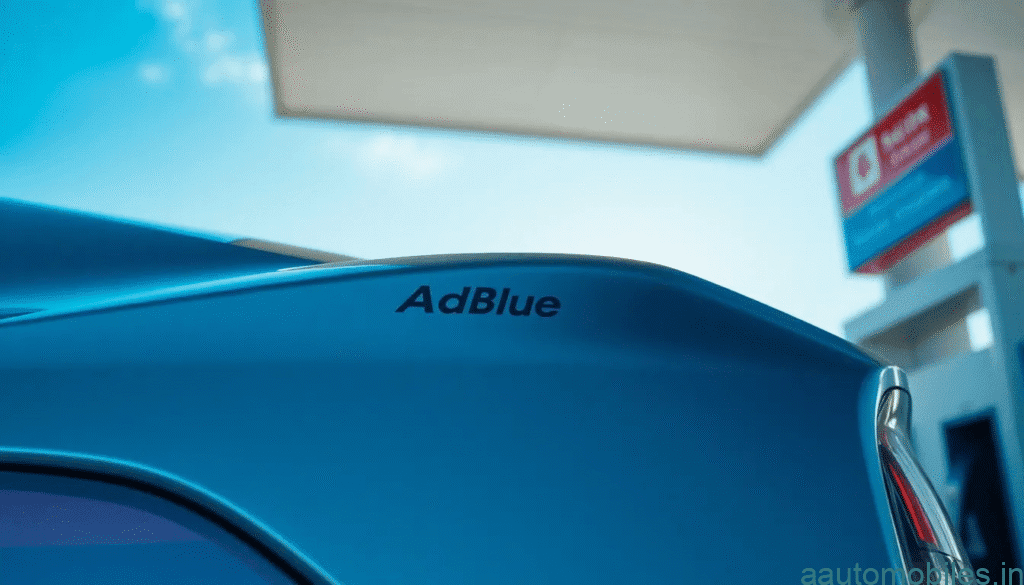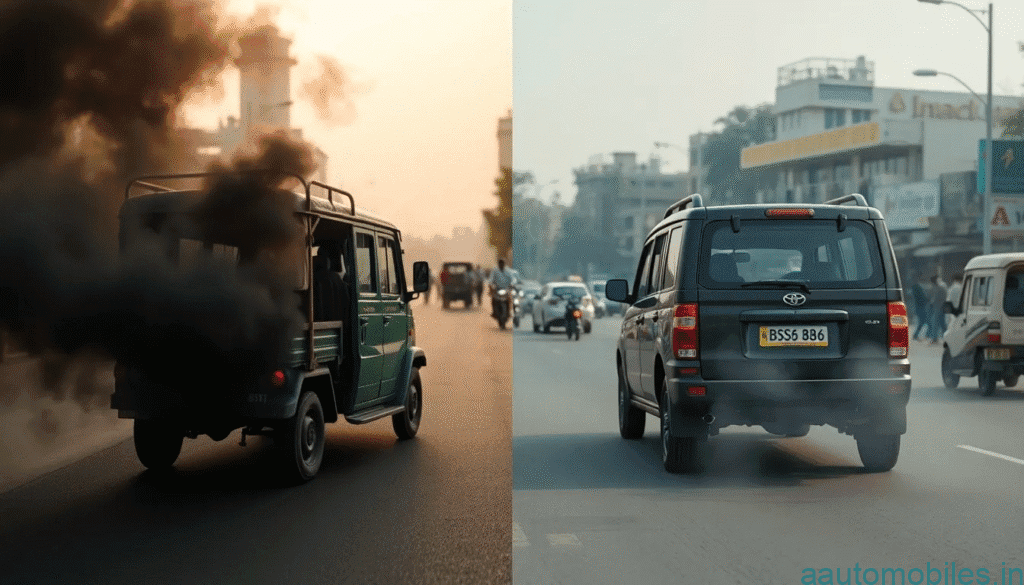India’s automobile industry has evolved drastically over the last two decades — especially in terms of engine performance and emission control.
These standards are known as Bharat Stage (BS) Emission Norms, introduced by the Indian government to reduce harmful vehicle emissions and make the air cleaner.
Let’s understand what BS6 is, how it differs from previous stages like BS1, BS2, BS3, and BS4, and why these changes were so important for the environment and public health.
🔹 1. What Are Bharat Stage (BS) Norms?
Bharat Stage norms are emission standards set by the Indian government that define the permissible limit of air pollutants emitted from vehicle engines.
They control pollutants such as Carbon Monoxide (CO), Hydrocarbons (HC), Nitrogen Oxides (NOx), and Particulate Matter (PM).
These norms are modeled on Europe’s Euro Emission Standards, ensuring that Indian vehicles meet global environmental standards.
In simple terms — BS norms decide how clean your car’s exhaust is and how eco-friendly your engine performs.
🔹 2. The Journey from BS1 to BS6
🟢 BS1 (Introduced in 2000)
- India’s first emission standard, similar to Europe’s Euro 1.
- Very basic control on vehicle emissions.
- It marked the beginning of India’s clean mobility journey.
🟢 BS2 (2005)
- Introduction of fuel injection systems for better combustion.
- Catalytic converters made mandatory in petrol engines.
- Emission levels reduced by around 20–30%.
🟢 BS3 (2010)
- Advanced Electronic Control Units (ECU) introduced.
- Diesel vehicles got improved combustion and emission control systems.
- Reduced hydrocarbon and nitrogen oxide emissions.
🟢 BS4 (2017)
- A major leap in emission technology.
- Engines adopted Common Rail Direct Injection (CRDI) and Turbocharger systems.
- On-Board Diagnostics (OBD) became standard to monitor engine and exhaust performance.
- Better fuel efficiency and cleaner exhaust gases.

🟢 BS6 (Implemented in 2020)
India skipped BS5 entirely and jumped directly to BS6, aligning with global standards.
- Introduction of Diesel Particulate Filters (DPF), Selective Catalytic Reduction (SCR), and AdBlue/DEF systems.
- Petrol engines received Gasoline Particulate Filters (GPF).
- Sulphur content in fuel reduced from 50 ppm to just 10 ppm.
- Emission of NOx and PM reduced by up to 90% in diesel vehicles.
🔹 3. Why Was BS6 Necessary?
- Air pollution in major Indian cities had reached alarming levels.
- Diesel engines were among the top contributors to toxic NOx and PM emissions.
- BS6 norms drastically reduced these pollutants, improving air quality.
- Cleaner combustion also led to better fuel efficiency and longer engine life.
In short, BS6 wasn’t just an upgrade — it was a necessity for a cleaner, healthier India.

🔹 4. New Technologies in BS6 Vehicles
- DPF (Diesel Particulate Filter): Captures and burns fine soot particles from diesel exhaust.
- SCR + AdBlue System: Converts nitrogen oxides (NOx) into harmless nitrogen and water vapor.
- OBD-II System: Continuously monitors engine and emission performance.
- Improved ECU Mapping: Ensures smoother driving and better mileage.
🔹 5. Impact of BS6 on Vehicles
✅ Reduced smoke and visible exhaust emissions.
✅ Improved fuel quality and combustion efficiency.
✅ Smoother engine performance and longer lifespan.
✅ Slight increase in maintenance cost, but significant environmental benefits.
🔹 6. The Road Ahead – BS7 and Electric Future
The Indian government is already planning for BS7 emission standards and promoting Electric Vehicles (EVs).
In the coming years, the focus will shift from “low emission” to zero emission, making India a leader in sustainable transportation.
🟢 Conclusion
The evolution from BS1 to BS6 isn’t just a story of engine upgrades — it’s a story of environmental responsibility and technological progress.
With BS6, Indian vehicles have become cleaner, more efficient, and globally competitive.
Every step from BS1 to BS6 represents India’s commitment to a greener and healthier future.
“Every clean engine means a cleaner tomorrow.” 🌱
